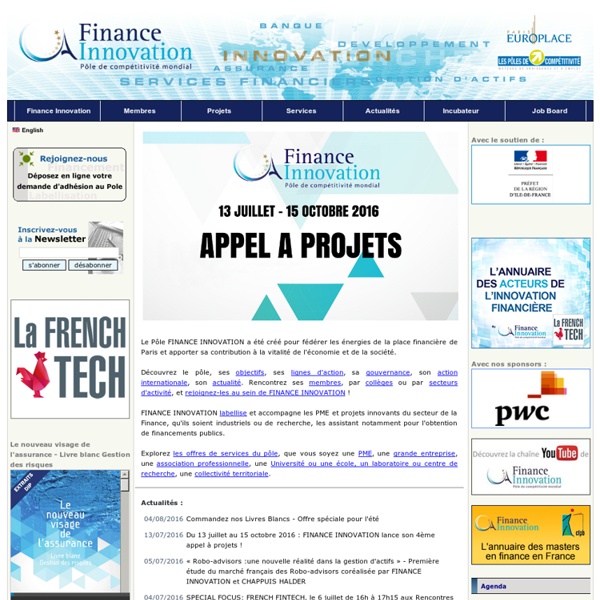Bienvenue au pôle de compétitivité mondial FINANCE INNOVATION
Le Pôle FINANCE INNOVATION a été créé pour fédérer les énergies de la place financière de Paris et apporter sa contribution à la vitalité de l'économie et de la société. Découvrez le pôle, ses objectifs, ses lignes d'action, sa gouvernance, son action internationale, son actualité. Rencontrez ses membres, par collèges ou par secteurs d'activité, et rejoignez-les au sein de FINANCE INNOVATION ! FINANCE INNOVATION labellise et accompagne les PME et projets innovants du secteur de la Finance, qu'ils soient industriels ou de recherche, les assistant notamment pour l'obtention de financements publics. Explorez les offres de services du pôle, que vous soyez une PME, une grande entreprise, une association professionnelle, une Université ou une école, un laboratoire ou centre de recherche, une collectivité territoriale.
http://www.finance-innovation.org/
ISIC - Home
Throughout history, business and its leaders have been confronted with continuous challenges. Innovation allows the business community to advance and face these challenges. An environmentally and socially responsible business needs to nurture its market thus creating social and environmental values that are as important for its long-term survival as generating economic capital. Successful businesses cannot exist in failed societies, therefore addressing global environmental and social issues offers an exciting new frontier for business in society and innovation. We call this "social innovation."
Business-en-trade
L’incubation : un rouage essentiel du dynamisme de la gestion d’actifs française
Les 600 sociétés de gestion immatriculées en France sont pour les 2/3 de type entrepreneurial. Comment toutes ces entreprises, fondées sur la conviction d’un gérant souhaitant s’émanciper, arrivent-elles à lever des fonds pour assurer leur démarrage et leur développement ? Les incubateurs sont à la manœuvre Derrière ce dynamisme se cache une activité méconnue et portant incontournable pour les jeunes sociétés de gestion en quête d’argent frais : l’incubation des sociétés de gestion.
Innovations et Technologies : Toutes les actus et news - L'Usine Nouvelle
L'association d'entreprenariat social des étudiants d'HEC Paris
CERPHI «
Asset Management Blog
Private equity co-investment: Best practices emerging January 29, 2015 By Anthony Conte, Principal, Regulatory Services and Scott Weisman, Managing Director, Regulatory Services – Private equity firms facing SEC examination in recent years have been preparing for scrutiny in several areas of their investment adviser compliance programs. One area of enhanced focus in recent SEC exams that warrants attention is external co-investments, or investments in […] Read the full article →
Bienvenue sur Villes-Innovations.com - Villes Innovations
Antropia - Le premier incubateur social français
Giving in a digital world
AM
CRISES
NetExplorateur ?
Related:



